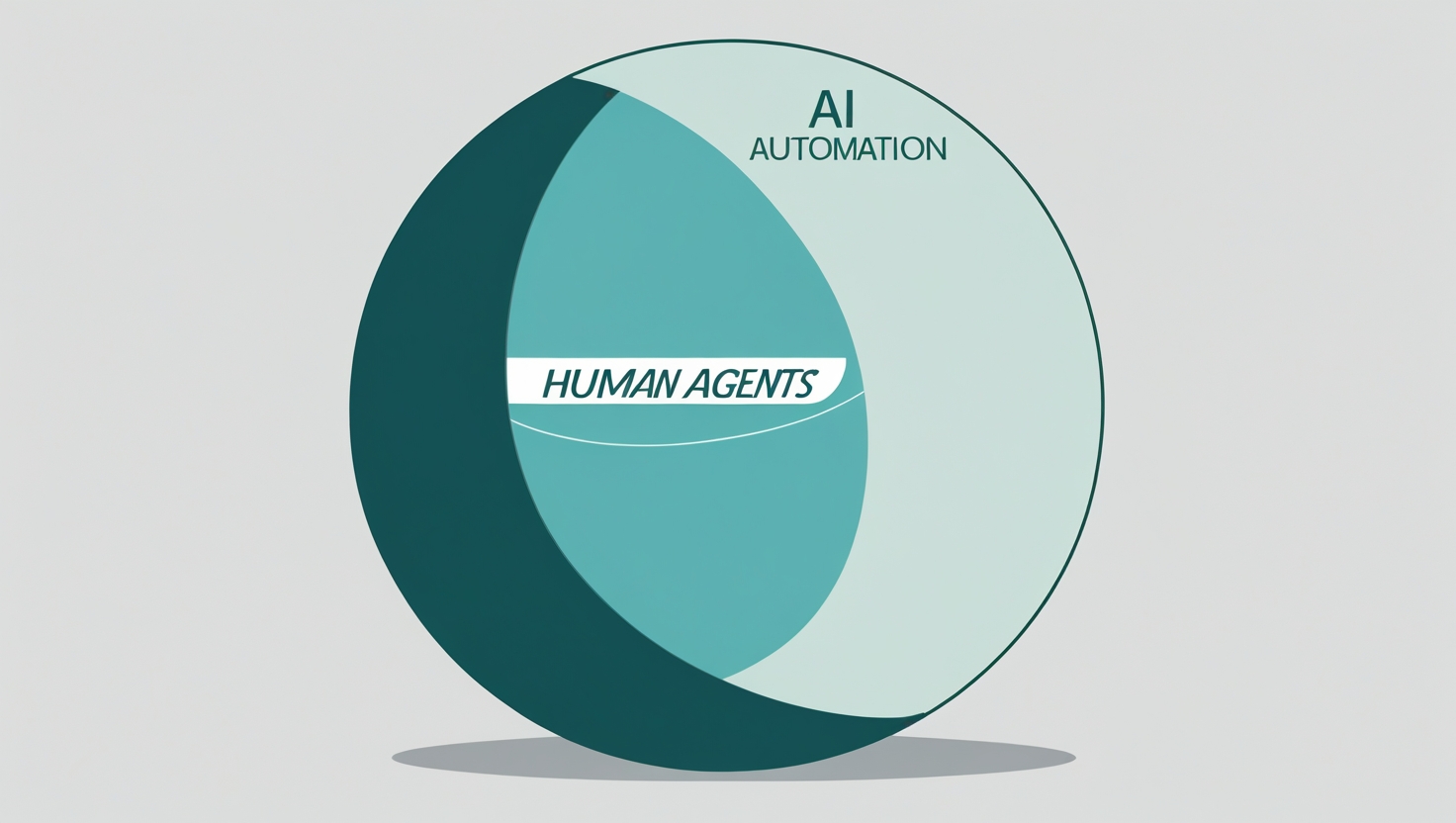Will AI Chatbots Take Over Customer Support by 2025?
The Evolving Landscape of Customer Support
Customer support is a critical function for businesses worldwide, constantly adapting to technological advancements and evolving customer expectations. As of April 2025, the demand for fast, efficient, and personalized service is higher than ever, pushing companies to seek innovative solutions.
The Rise of AI in Customer Service
Artificial intelligence (AI) has emerged as a transformative force in customer service. AI-powered tools, particularly chatbots, are increasingly handling routine inquiries, automating tasks, and providing instant responses, fundamentally changing how businesses interact with their customers.
Setting the Stage: AI Chatbots by 2025
The question of whether AI chatbots will fully "take over" customer support by 2025 is a hot topic. While significant progress has been made, the reality is nuanced. This article explores the current state of AI in customer support, its capabilities and predictions for 2025, the ongoing debate between automation and human interaction, and the likely future landscape.
The Current State of AI in Customer Support (as of April 2025)
Prevalence and Capabilities of Existing Chatbots
As of early 2025, AI chatbots are prevalent across various industries. Their capabilities extend beyond simple FAQs to understanding complex queries, processing natural language (NLP), and performing basic transactions. [Statistic about chatbot adoption rate] indicates widespread integration, particularly for initial customer contact.
Industry Adoption Rates
Sectors like e-commerce, banking, telecommunications, and healthcare have seen high adoption rates of customer support AI. Businesses leverage chatbots for lead generation, appointment scheduling, order tracking, and initial troubleshooting, freeing up human agents for more complex issues.
Key Trends Leading into 2025
Leading into 2025, key trends include improved conversational AI, better integration with CRM systems, enhanced sentiment analysis, and the ability to handle more diverse query types. The focus is shifting towards creating more human-like and helpful automated interactions.
AI Chatbots: Capabilities and Predictions for 2025
Advanced Natural Language Processing (NLP)
By 2025, NLP capabilities in AI chatbots are significantly more sophisticated. They can understand slang, nuances, and complex sentence structures more effectively, leading to fewer misunderstandings and more accurate responses.
Personalization and Contextual Understanding
Chatbots in 2025 can access and utilize customer history and context from integrated systems (like CRM) to provide highly personalized interactions. They can remember previous conversations and tailor responses accordingly.
Integration with CRM and Other Systems
Seamless integration with CRM, knowledge bases, and backend systems is standard. This allows chatbots to retrieve specific customer data, update records, and perform actions like processing returns or updating account details directly.
Predictive Support and Proactive Engagement
AI is enabling predictive support. Chatbots can analyze user behavior or
system data to anticipate potential issues and proactively reach out to offer
assistance before the customer even contacts support.  .
.
Multichannel and Multilingual Support
AI chatbots in 2025 operate across multiple channels (web, mobile apps, social media, messaging platforms) and offer robust multilingual support, expanding reach and accessibility for global audiences.
Automation vs. Human: The Core Debate in Customer Support
The central question isn't replacement, but the optimal balance between automation and human interaction. This debate shapes the future of customer support AI.
The Case for Automation: Efficiency, Speed, and Cost Savings
Automation offers undeniable advantages.
Benefits of AI-Powered Automation
- Efficiency: Handling multiple conversations simultaneously.
- Speed: Providing instant, 24/7 responses.
- Cost Savings: Reducing the need for large agent teams for routine tasks.
- Consistency: Delivering uniform information every time.
Use Cases for Full Automation
Ideal for handling high-volume, repetitive queries like password resets, order status checks, basic information requests, and simple troubleshooting steps.
The Case for Human Agents: Empathy, Complexity, and Relationship Building
Human agents remain indispensable for certain tasks.
Strengths of Human Interaction
- Empathy: Understanding and responding to customer emotions.
- Problem-Solving: Handling complex, unique, or ambiguous issues.
- Relationship Building: Creating rapport and trust with customers.
- Handling Sensitive Issues: Providing nuanced support for delicate situations.
Situations Requiring Human Intervention
Complex troubleshooting, complaints requiring de-escalation, high-value customer interactions, and situations where emotional intelligence is crucial necessitate human involvement.
The Hybrid Model: Automation and Humans Working Together
The most effective approach identified by 2025 is the hybrid model.
Defining the Hybrid Approach
This model uses AI chatbots to handle initial contact, routine queries, and data gathering, seamlessly escalating complex or sensitive issues to human agents.
Optimizing Handoffs Between AI and Humans
Smooth handoffs are critical. The chatbot should transfer relevant conversation history and customer context to the human agent to avoid repetition and frustration.
The Future is Collaborative, Not Exclusive
By 2025, the consensus is that AI will augment, not entirely replace, human
roles in customer support, creating a more efficient and effective overall
system.

Benefits of Implementing AI Chatbots in 2025
Implementing AI chatbots offers significant advantages for businesses in 2025.
-
Improved Customer Satisfaction and Experience
Instant responses and 24/7 availability meet modern customer expectations, leading to higher satisfaction scores.
-
Increased Operational Efficiency
Automating routine tasks allows human agents to focus on high-value interactions, boosting team productivity.
-
Reduced Costs
Lowering the volume of simple queries handled by humans can lead to significant cost savings in staffing and operations.
-
24/7 Availability and Scalability
Chatbots provide support around the clock and can scale easily to handle peak volumes without additional staffing costs.
-
Data Collection and Insights
Chatbot interactions generate valuable data on customer needs, pain points, and query trends, informing business decisions and service improvements.
Challenges and Considerations for AI Chatbot Adoption
Implementing AI chatbots isn't without its hurdles.
-
Implementation Complexity and Cost
Setting up and integrating advanced AI systems can be complex and require significant initial investment.
-
Maintaining Data Privacy and Security
Handling customer data requires robust security measures and compliance with regulations like GDPR or CCPA.
-
Ensuring Ethical AI Use
Avoiding bias in AI responses and ensuring transparency about when a customer is interacting with a bot are crucial ethical considerations.
-
The Need for Human Oversight and Training
Chatbots require ongoing monitoring, training, and refinement by human teams to maintain accuracy and effectiveness.
-
Measuring ROI and Success
Clearly defining metrics and measuring the return on investment and overall success of chatbot implementations can be challenging.
Strategies for Successful AI Chatbot Integration
Effective implementation requires careful planning.
-
Defining Clear Objectives and Use Cases
Start by identifying specific problems the chatbot will solve and the tasks it will handle.
-
Choosing the Right Technology and Vendor
Select a platform that aligns with your needs, offers necessary integrations, and has a strong track record.
-
Training the AI Model Effectively
Provide the AI with relevant data and ongoing feedback loops to improve its understanding and responses.
-
Integrating with Existing Workflows
Ensure the chatbot integrates smoothly with your CRM, helpdesk software, and agent workflows for seamless handoffs.
-
Continuous Monitoring and Improvement
Regularly analyze chatbot performance data to identify areas for improvement and retrain the model as needed.
Summary: Key Takeaways
-
Recap of AI Chatbot Trends for 2025
By 2025, AI chatbots feature advanced NLP, personalization, deep system integration, and proactive capabilities.
-
Understanding the Automation vs. Human Dynamic
Automation excels in efficiency and speed for routine tasks, while humans are essential for empathy, complexity, and relationship building.
-
The Importance of a Hybrid Strategy
The most effective customer support model in 2025 combines the strengths of AI and human agents through seamless collaboration.
The Future Beyond 2025: What's Next for AI in Support?
Further AI Advancements
Beyond 2025, expect AI in customer support to become even more predictive, conversational, and capable of handling increasingly complex tasks autonomously, potentially moving towards truly cognitive AI interfaces.
Evolving Roles for Human Agents
Human agents will evolve into supervisors, trainers for AI, and specialists handling high-touch, complex, or strategic customer interactions. Their roles will become more focused on empathy, problem-solving, and relationship management.
The Customer Support Landscape of Tomorrow
The future points to a highly automated, yet deeply personalized and efficient customer support ecosystem where AI and humans work in concert to deliver exceptional experiences.
Frequently Asked Questions
Will AI chatbots replace all human customer support jobs by 2025?
How accurate are AI chatbots expected to be in 2025?
What industries will benefit most from AI chatbots by 2025?
How do I get started with implementing an AI chatbot?
What are the main risks of using AI in customer support?
Conclusion
Reiterating the Transformative Potential of AI Chatbots by 2025
AI chatbots have undeniably transformed the customer support landscape by 2025, offering unprecedented levels of efficiency, speed, and availability. Their advanced capabilities are reshaping how businesses interact with customers.
Balancing Automation and Human Touch for Optimal Results
The key to success in 2025 and beyond lies not in full automation but in finding the right balance between AI efficiency and human empathy. The hybrid model, where AI and humans collaborate, delivers the most effective and satisfying customer experiences.
Final Thoughts
While AI chatbots won't fully take over customer support by 2025, they are indispensable tools. Embracing a strategic, hybrid approach is crucial for businesses looking to enhance service quality and operational efficiency. Ready to explore how AI can augment your customer support?
Start AI Integration With Us NEW


